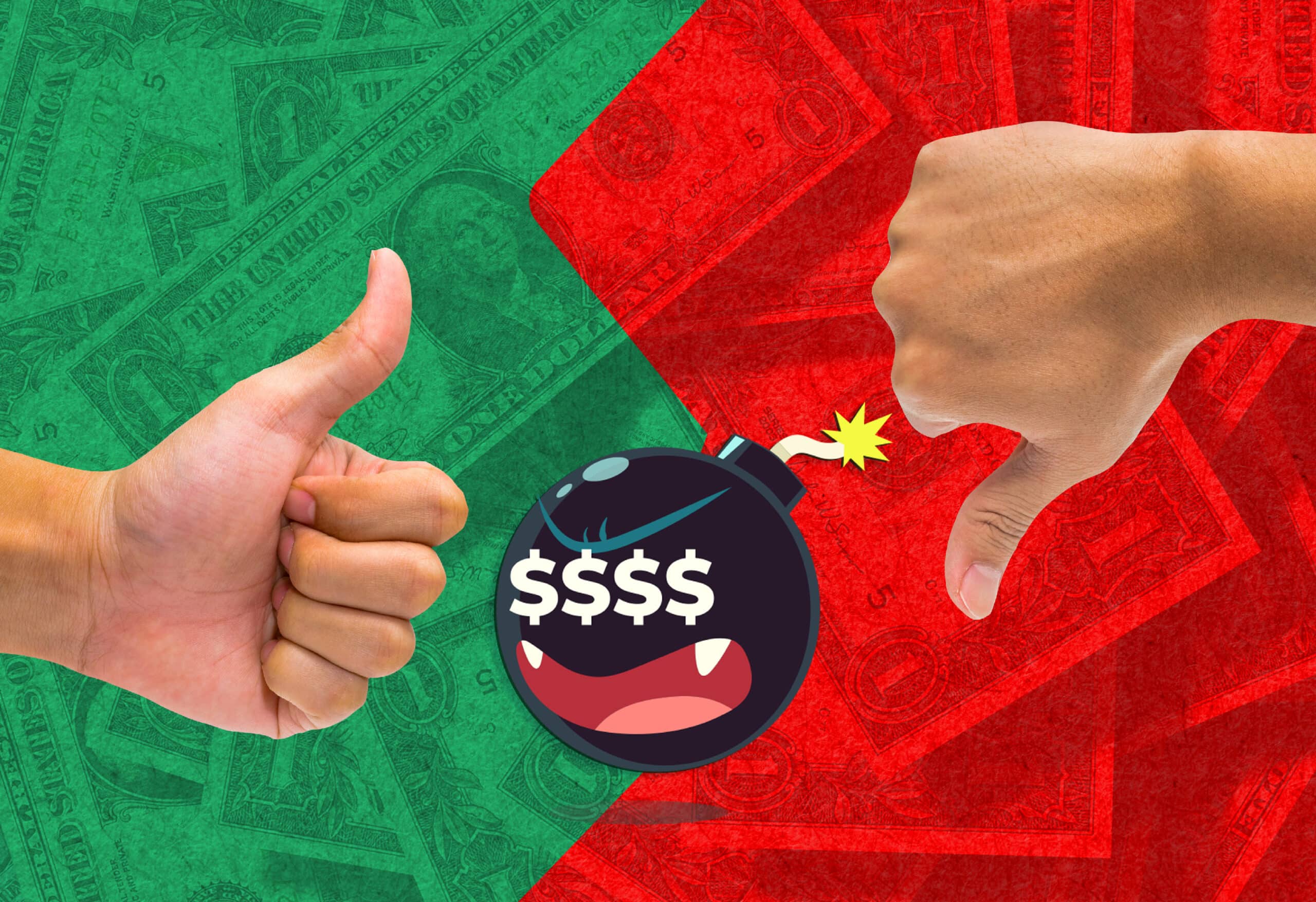
What is good debt?
When it comes to debts, it is better to avoid them because, to repay them, we will use our future income and our ability to save will decrease. However, there are different types of debt, not all are bad. So a good debt management can also generate wealth.
Let’s talk a little bit about the debt that we all know, the bad debt. This can be from credit cards or personal loans.
In general, the interest rates of these debts are often very high and do not bring any profit beyond the consumption we buy with them. Ultimately, these debts serve only to acquire liabilities;
Can also be a indicator that we are spending more than we generate, Because they usually cover expenses that we should be able to cover with our monthly income, like the supermarket, restaurants, clothes, etc. It is important to know that this is not sustainable all the time.
What is good debt?
Instead, good debt is what we use to buy an asset that, in the end, will help us to generate revenue. These debts help us to buy goods.
It is important to remember that the income this asset generates must be sufficient to pay the monthly credit and have, moreover, a profit. For example, you can request a loan to buy a house and allocate it to the rent. If the quota to be paid is of 300 euros and the rent established of 700 euros, it has a yield of 400 euros; in this way the quota can be paid and a profit is generated.

A good debt can be a bad investment
We must emphasize that a good debt also carries risk and can be a bad investment. An example of this may be if a person asks for a loan to finance an entrepreneurial project. In this situation, even if the project is expected to succeed, there is a possibility that it cannot be realized and, in the end, the person will be indebted.
In conclusion, there are situations for which it is worth borrowing. Here are some examples of good debts that might be a good choice for you:
- Mortgage loans: Buying a house can take a lot of money and few have the ability to buy it in cash. So, if you have already evaluated the options between the purchase and the rent, applying for a mortgage loan to buy the house is a good debt. Because the house is not worn out and can also increase its value. However, you have to assess your chances of making payments; this is a debt that will accompany you for a long time and failure to pay debts will always create financial problems.
- Investment loan: this option can be very different. A loan for education can be considered as an investment loan, because through education you acquire skills that you will then need to generate more revenue. The acquisition of material and tools to carry out your work is also in this category, as you will use these materials to continue working and, of course, this will generate revenue.
What would happen if you got into debt and didn't make any money?
What would happen if you got into debt and didn’t make any money? As we have already said, good debts also involve risks, so it is important to always keep this scenario in mind.
A solution option in this case is the following:
Loans in countries with high inflation: In this case, inflation is so high that often the value of shopping carts or electronic products, among other goods, grows faster than interest on debt. So, if you buy an asset to sell in a few months at a higher price, you will get a profit from it. Then it is considered a good debt.
Per this type of debt you have to consider the following::
- This ONLY WORKS in high inflation countries.
- It’s an investment and only buys the things you can easily sell.
In this debt you use money to make more money.
After this, can you tell a good debt from a bad one? In the first, you are indebted for the purpose of improving your finances in the future. While the second, meets your consumption needs and you get no benefit.
If you are considering contracting a debt, always calculate if your obligations will allow you to do so and, if you are unsure, it is better not to get into debt.
